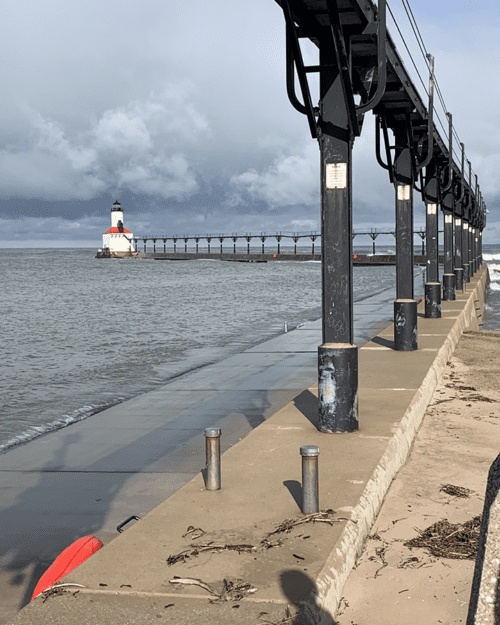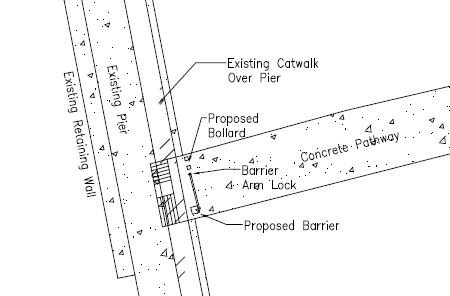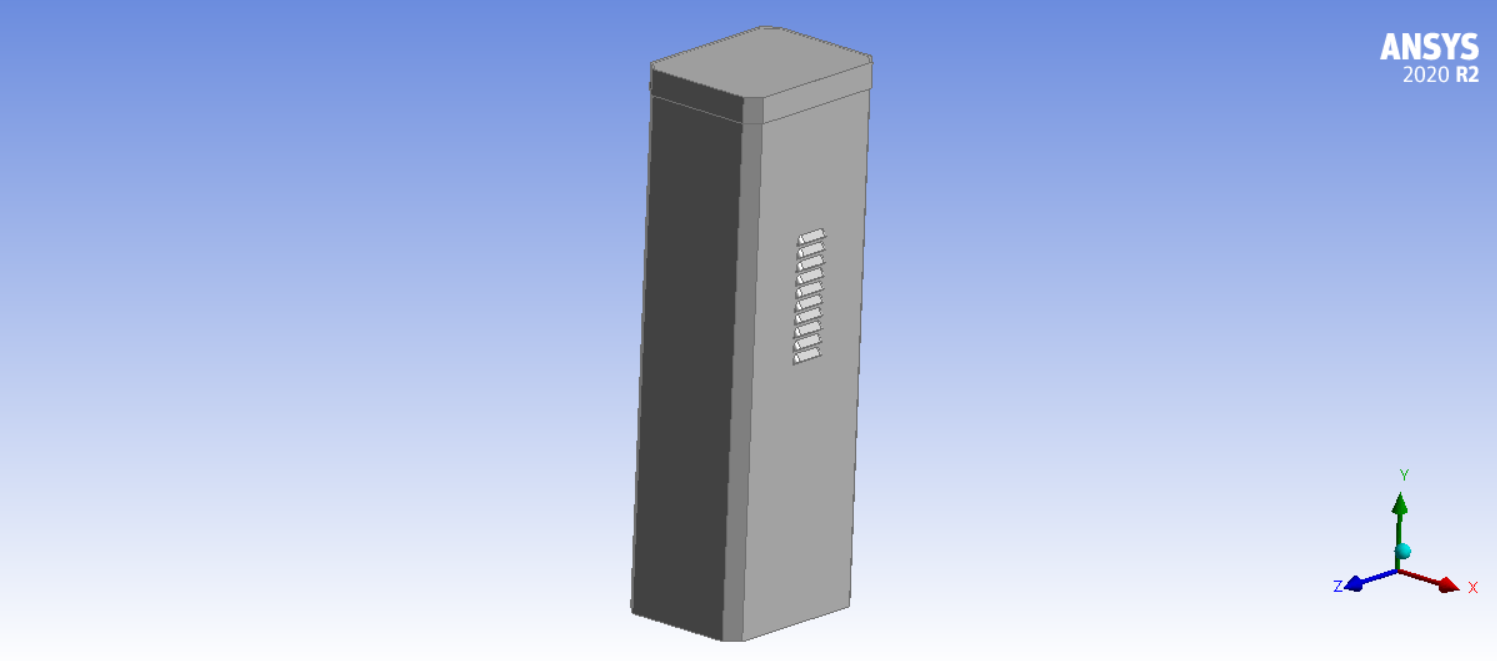Purdue University Northwest Engineering Students Design Barrier System for Michigan City Pier

Michigan City Pier and Lighthouse.
A group of Purdue University Northwest (PNW) engineering students spent their senior year putting their knowledge and skills to the test in the real world. The students, members of the Senior Engineering Design I and II classes, designed a barrier system for the Michigan City pier that is expected to be constructed later this year. Their efforts provided them with real-world engineering experience, the ability to serve the local community and an opportunity to protect public safety.
“We really appreciate this type of opportunity for the engineering students at Purdue Northwest,” says Shengyong Zhang, associate professor of Mechanical Engineering at PNW. “This kind of real-world experience was a win-win project. The students gained real-world knowledge and experience while working on a public safety project for the local community.”
Karen Laboy, ’21, B.S. Civil Engineering, worked on the pier project and thought the experience was invaluable. “There were so many things I learned from this experience, like the importance of teamwork, communication, organization, creativity and scheduling,” says the Portage native. “Also, how to deal with constraints, find alternative ideas to problems, and be flexible enough to deal with a lot of changing requirements.”
This kind of real-world experience was a win-win project. The students gained real-world knowledge and experience while working on a public safety project for the local community.
Spotlight on Safety
The project grew out of a concern for public safety. Quickly changing weather conditions on the lake can become dangerous and hinder the public’s ability to safely walk the pier. Ed Shinn, superintendent of the Michigan City Parks and Recreation Department, partnered with PNW, Zhang and the student engineers to find a solution. The finished project needed to meet the many requirements and constraints, or limitations, outlined in the proposal.
Zhang formed two teams from within the class to work on the pier project — one team each from the Hammond and Westville campuses. The teams worked independently of each other and each team was composed of students from different engineering concentrations — mechanical, civil and electrical. The purpose, as Zhang explained, was to simulate a real-world work environment for students to learn how to solve real-world engineering problems.
“In the work place, engineering problems are quite different from class projects,” explains Zhang. “As working professionals, colleagues from different departments work together on the same project. They may share a professional language in engineering, but will often have different views and solutions to a problem. This project taught them how to work in a group made up of different professionals. It also forced them to not only think about a solution to the problem, but also how to optimize and improve the designs.”
Building Real-Life Experience
“The students really understood the constraints of the project,” says Shinn, who served as the industrial advisor on the project. “There were many, many constraints; however, the students considered all of the problems, got involved in every aspect and followed every rule of engineering to come up with two solutions that worked within the project requirements.”
In addition to the design element of the project, the student engineers had to develop a budget, consider manufacturing costs, upkeep and create a presentation to deliver to the parks and recreation board.
“Both groups worked really hard and had everything very planned out,” says Shinn. “Their proposals and presentations were impressive and professional. I would have guessed they were already working engineers.”
“The senior design class helps train engineers,” states Zhang. “With this project, these students went from engineering students to real engineers.” Laboy agrees, “This project was just a great real-life experience. It has truly prepared me for a job in engineering.”
According to Shinn, the barrier is expected to be constructed later this year. “In fact,” says Shinn. “Because of this barricade, as a team collectively, these engineering students will probably save lives in the future.”

